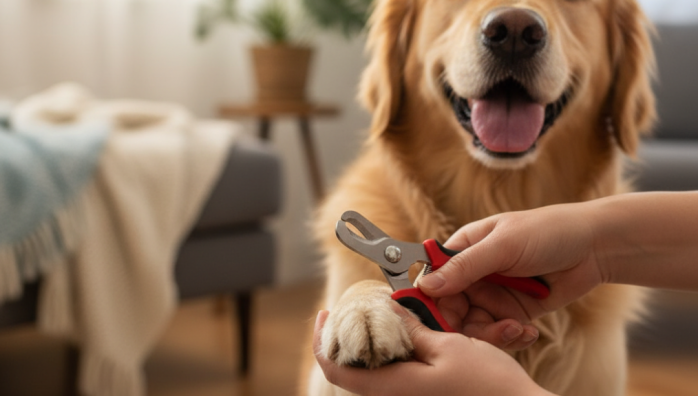Trimming Your Dog's Nails Safely at Home
by admin in Pet Care Basics 14 - Last Update November 16, 2025

I still remember the first time I tried to trim my rescue dog\'s nails. The clippers felt huge in my hand, he was squirming, and I was absolutely terrified of hurting him. That dreaded \'click-clack\' sound on our hardwood floors was a constant reminder of my failure. It took a lot of trial, a few errors, and plenty of patience, but over the years I\'ve developed a calm, confident routine that works for us, and I want to share it with you.
Why it\'s so important to keep nails trimmed
Honestly, this isn\'t just about noise or scratched floors. Overly long nails can actually affect your dog\'s health and comfort. They can force the toes into an unnatural position, which can lead to discomfort, affect their posture, and even put strain on their joints over time. In severe cases, the nails can curl around and grow into the paw pad, which is incredibly painful. Keeping them at a healthy length is a simple act of preventative care.
Gathering the right tools for the job
Having the right equipment makes all the difference and can turn a stressful event into a manageable one. Before you even think about grabbing your dog, get your station ready.
Guillotine vs. scissor-style clippers
There are two main types of clippers. Guillotine-style clippers have a single blade that cuts the nail when you squeeze the handle. I used these for a while, but I personally found that scissor-style clippers (they look like small, curved scissors) give me more control and visibility, especially on my dog\'s thicker nails. For smaller dogs, the guillotine style can work great. It\'s really about what you feel most confident using. Some people also love nail grinders, which file the nail down, but they require some extra desensitization to the noise and vibration.
Don\'t forget the styptic powder
This is non-negotiable. Styptic powder is a substance that stops bleeding quickly. Accidents happen, even to seasoned groomers. Cutting the \'quick\' (the blood vessel inside the nail) is stressful, but having this powder on hand turns a panic moment into a minor hiccup. You can find it at any pet store. In a pinch, cornstarch can also work, but styptic powder is more effective.
My step-by-step process for a stress-free trim
Patience is the name of the game here. You\'re building trust, not just trimming nails. I always try to do this when my dog is already calm and relaxed, maybe after a long walk or in the evening.
- Get them comfortable: For a few days leading up to the trim, I just handle my dog\'s paws. I\'ll touch them, hold them gently, and give him a treat. I\'ll even let him sniff the clippers and give him a treat for just being near them. The goal is to remove the fear associated with the tools and the action.
- Find the quick: If your dog has light-colored nails, you can often see the pink quick inside. Your goal is to cut the white part of the nail, stopping well before that pink area. If your dog has black nails, like mine does, this is much harder. My technique is to trim off just a tiny sliver at a time. As you get closer to the quick, you\'ll see a small, dark circle appear in the center of the cut nail surface. That\'s your signal to stop.
- Make the cut: Hold your dog’s paw firmly but gently. Position the clippers to cut the nail from top to bottom, not side to side, to prevent crushing it. I aim for a clean, quick, confident snip. A hesitant, slow squeeze is more likely to be uncomfortable for them.
- Reward, reward, reward: After each paw, or even each nail for a very nervous dog, I give tons of praise and a high-value treat. I want him to associate this process with good things. We make it a little party!
What to do if you cut the quick
First, don\'t panic. Your dog will react more to your stress than the actual cut. I\'ve done it, and I felt awful, but it\'s fixable. Calmly take a pinch of styptic powder and press it firmly onto the tip of the bleeding nail for about 30 seconds. The bleeding should stop. Give your dog a break, lots of love, and maybe end the session for the day. It happens to everyone. This is just my personal experience, and if you\'re ever truly worried or the bleeding doesn\'t stop, a quick call to your vet is always the best course of action.










